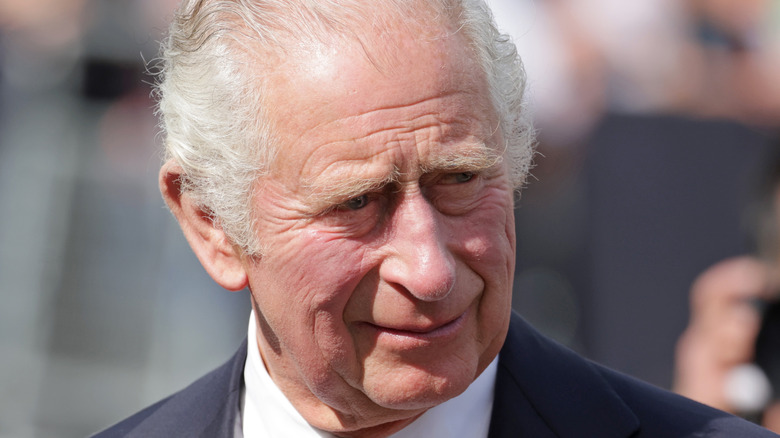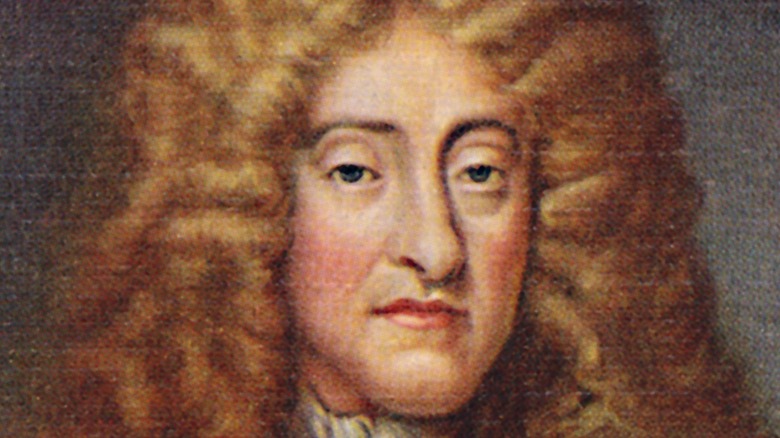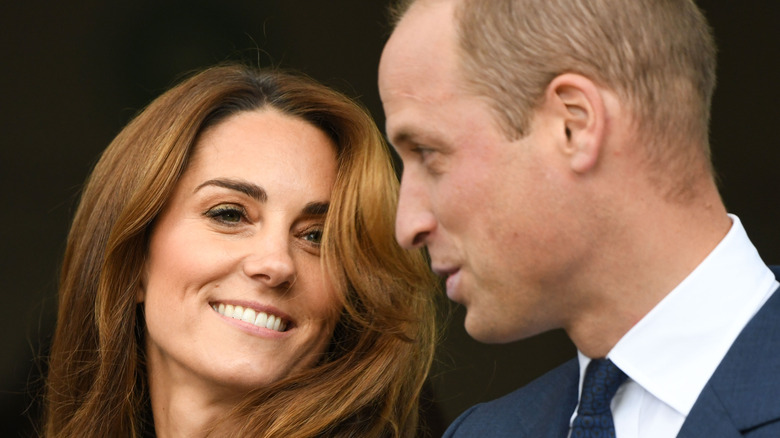How The Succession Of The Crown Act Of 2013 Changed The British Line Of Succession
With the death of his mother, Queen Elizabeth II, her eldest son Prince Charles is now king of England, reigning as King Charles III, per CNN. Along with that change, the royal line of succession to the British throne has been reshuffled with Charles' eldest son William the prince of Wales now next in line for the throne after his father's death. With that in mind, the royal line succession as it stands would be very different if not for the Succession of the Crown Act of 2013, as the official Royal website explains.
After William, the prince of Wales' eldest son Prince George of Cambridge, who was born in 2013, is next in line, per the AP. From there, the royal line of succession goes on to include a number of other royal family members, such as Prince William's remaining two children. In fifth place is William's younger brother Prince Harry, Duke of Sussex. After Harry comes Harry and Meghan Markle's two children, Master Archie Mountbatten-Windsor and Miss Lilibet Mountbatten-Windsor in that order.
Succession to the English throne is regulated by descent, but also by parliamentary statute
As the Royal website notes, prior to 2013 the rules that governed whom and in what order members of the royal family would get to be king or queen were laid out by the 1689 Bill of Rights and the 1701 Act of Settlement. In 1688, King James II (pictured) abandoned the throne when he left the country, and as a result, Parliament ruled he had abdicated, sending the royal line of succession into disarray. (James II's daughter Mary and her husband, William of Orange, allowed to rule jointly, were offered the throne by Parliament.)
Around that same period the Bill of Rights, Act of Settlement, and several subsequent acts establishing precedent ruled that while royal succession was a family matter it could also be decided by Parliament. The governing body could also choose to remove a sovereign based on misrule. Through both the Bill of Rights and the Act of Settlement, Parliament also established several guidelines for who could be sovereign, several of which in today's world seem outdated, but nonetheless reflect the worldview of the English at that time.
Roman Catholics can be excluded
As established in the Bill of Rights and the Act of Settlement, a Roman Catholic member of the royal line of succession could be included, and anyone who takes the throne is also required to swear their allegiance to the Churches of England and Scotland, rules which still stand to this day. With the Succession of the Crown Act of 2013, passed with the support of Queen Elizabeth II, one other precedent established more than three centuries earlier regarding the royal line of succession did change, and that change is now reflected in the line of succession, according to the BBC.
If not for the passage of the Succession of the Crown Act of 2013, the second child and eldest daughter, of Prince William and Catherine "Kate" Middleton, Princess Charlotte of Cambridge, would be skipped over in favor of their third child, a son, Prince Louis of Cambridge. As it is now, Charlotte and Louis are third and fourth in line, but under the old rules, the order was decided by gender, and Louis would move ahead of his sister, and their positions would be reversed. The new rule only applies to children in the royal family born after 2011, and though sovereigns are still not allowed to be Roman Catholic, their spouses can be, which previously wasn't the case, according to NBC News.


